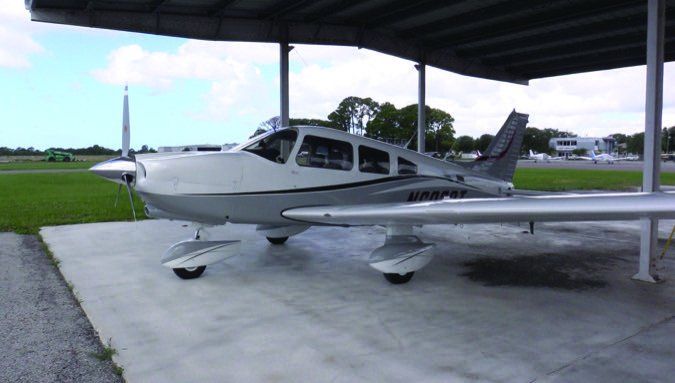It’s axiomatic that four-place airplanes are flown with two or three seats empty for most trips. But it’s just as true that some owners want not just four seats, but a bunch of payload even beyond that. That’s why we have the Cessna 182 and the Piper PA-28-235/236 series. That there aren’t many of the latter suggests that owners hungry for hauling are a fraction of the market, at least for Piper.
Premier Aircraft is betting that the fraction is large enough to constitute a modest business in refurbing the PA-28-236—the Dakota—to new standards and we recently got a look at what the company is doing with this airplane. As new single-engine airplanes reach nearer the million dollar mark, Premier, a well-known Florida sales and modification shop, thinks owners will find value in a refurbed example of an airplane that’s no longer built, but has niche appeal for buyers bored by the everyman humdrumness of a Skylane.
Interestingly, Premier has discovered that buyers who may push back on the $259,000 asking price of a restored model are willing to pay a premium for an example that’s repaired and gussied up, but not to the extent of a bare-metal redo.
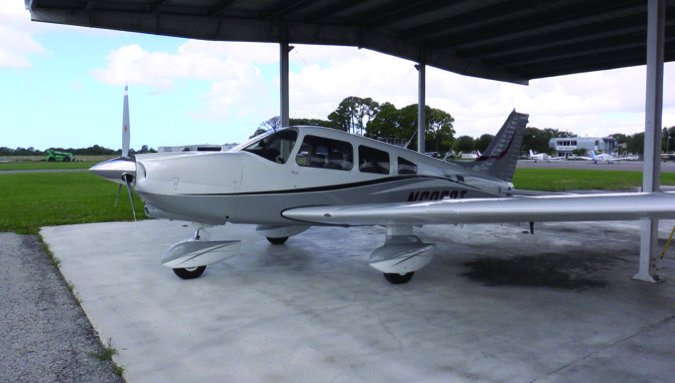
Back in the Day
The Dakota’s DNA traces right back to the original PA-28 Cherokee, but the model emerged when Piper and Cessna were in pitched head-to-head competition for all the buyers they could find. The basic Cherokee was fine and all, but it couldn’t carry much very far or very fast. By the early 1960s, Cessna was doing we’ll with the 182 Skylane and Piper’s answer was to stuff a Lycoming O-540 into the PA-28 airframe and christen it the PA-28-235.
In 1973, it got a formal name: the Charger. And a few years later, it was renamed the Pathfinder. The 235 series came into its own in 1979 with a new engine—the O-540-J3A5D—to replace the original B4B5.
The airplane also got a longer fuselage and a semi-tapered wing to replace the old Hershey bar design that celebrated its draginess with sink fests on final approach that put more than one hapless pilot into the weeds short of the threshold.
Premier’s target donors for their refurb market are the 1979 airplanes forward. The Dakota actually survived in the Piper lineup all the way to 1994 and none have been made since.
The Dakota’s claim to glory was load hauling and it didn’t disappoint. Factory numbers gave it a useful load of 1392 pounds and even if it was 100 pounds less in the real world, it could still carry full fuel and four people with enough payload left for reasonable baggage. For hauling the kid to college, it could cross several states with a Baby Grand in the back. By comparison, the 182 could carry a load too, but it was often just a little shy of what the Dakota could muster, so Piper found buyers. But not a lot of buyers. Piper built nearly 33,000 PA-28s, but fewer than 3000 were the six-cylinder variants and fewer still were Dakotas. Premier estimates that just over 830 airworthy Dakotas remain on the registry.
Why the Dakota?
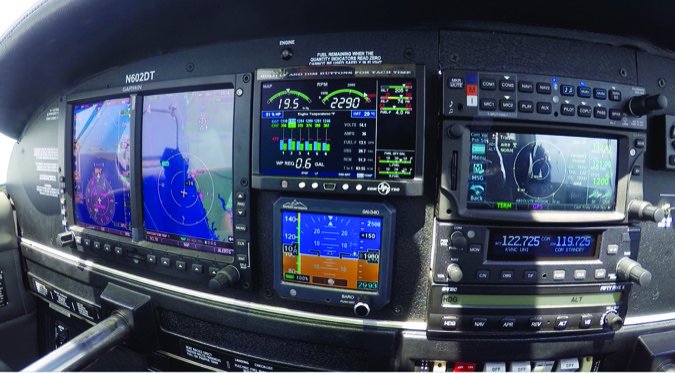
“We kind of got brought into it,” says Barry Rutheiser, Premier’s regional sales manager. “One of Fred’s very good customers had a son getting into flying and wanted him to have a very nice airplane. He thought a Dakota would be the perfect airplane.” (Fred is Fred Ahles, Premier’s principal and an aircraft marketing guy who has sold just about every brand and model ever made.)
Although the refurb market remains somewhat of a mixed bag, Premier figured that if one buyer was interested in a ground-up redo of a niche model like the Dakota, others would be, too. The instinct proved correct, but the numbers remain an unknown.
“We’re getting a lot of calls on this airplane and when they hear the price, there’s sticker shock,” Rutheiser told us. We can understand why. Premier is offering three levels of refurbishment for the Dakota. The base offering, what Premier calls the Silver Edition, is $259,000. For $299,000, you get the Gold model and $329,000 buys the Platinum Edition.
What’s the difference? All three levels get an overhauled engine from Certified Engines, a new three-blade prop, a complete strip and repaint and a new interior. From there, it diverges with various avionics and instrumentation choices.
The Silver Edition, for instance, gets a pair of Garmin G5s (one for the AI, one for an HSI), a GTN650 navigator with a GTN225A backup comm and ADS-B In and Out. The interior is basic vinyl. The Gold upgrade includes leather upholstery with wool carpet and an S-TEC 55X autopilot. The top-of-the-line Platinum version adds a Garmin G500 display, a GTN750 in place of the 650 and the same autopilot. Customers are free to mix and match and Rutheiser says Premier is flexible on how the airplanes are equipped.
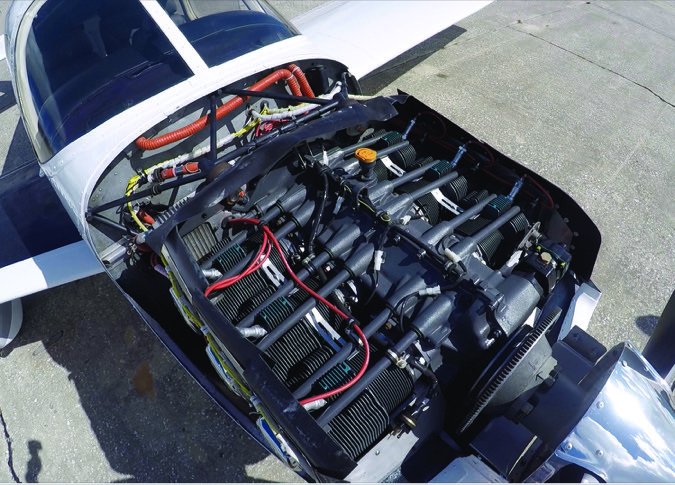
And perhaps the most interesting offshoot of this exercise is that customers may not want any of the higher-end upgrades, but will instead settle for a clean, carefully inspected and repaired airframe with modest avionics upgrades. Premier’s Ahles said another thing common to the Dakotas the company is selling is that all of them—whether fully refurbed or just brought to a higher state of airworthiness—get a comprehensive annual that averages about $20,000.
“There 832 Dakotas in the U.S. Less than 10 of them are for sale,” says Ahles. “They’re all at about $80,000. Some are high-time engines and probably high-time airframes. And not one of them has seen a Piper service center in 20 years for a real annual,” he adds. Not surprisingly, Premier has discovered stratification in the market. One tier of buyers wants a higher-quality airplane and will pay a small premium while another will pay a much larger sum for an airplane that presents as new, but isn’t new and costs two-thirds to half what a new airframe would. The unique thing about the Dakota is that there’s no stratospherically priced new version of it to compete and the airplane still has unique capabilities.
New or Not?
We spent a few hours looking over and flying Premier’s full-boat refurb of the Dakota. It generally lives up to the claim as “like new.” The paint—the only part of the job done out of house—is we’ll detailed and designed in a modern scheme. In fact, viewed at a distance, the restored Dakota is indistinguishable from a factory-new Archer. It’s actually 13 inches longer than the Archer, but unless the aircraft are side by side, only a Piper expert would notice.
The interior in the example we reviewed was flawless. The only oversight we would complain about is that the flap handle bore the dings and chipped paint of nearly four decades of use and one of the panel placards was peeling.
The panel is we’ll conceived, within the limitations of fitting new equipment into an old airframe. The G500 serves as the primary flight display, backed up by a Sandia SAI-340 Quattro standby gyro. That combination allows the ditching of the airplane’s stock vacuum system. Navigation is provided by Garmin’s GTN750 (or GTN650) with a Garmin GTN225A navcomm for backup, all piped through a GMA35 audio panel/intercom.
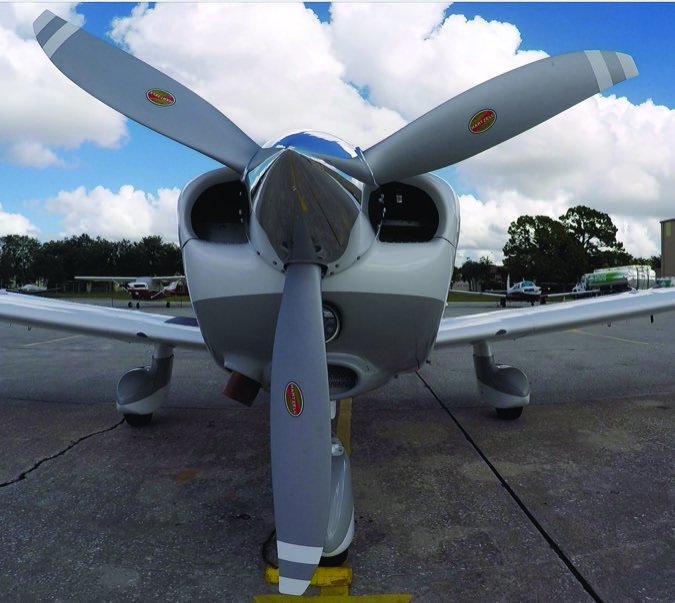
If we had our druthers, we would place the JPI engine monitor and backup gyro on the right side of the radio stack for a less cluttered and neater arrangement. But this shows the limitations of retrofit, since the standby gyro has to be within easy view of the pilot, forcing a bit of a jumble. Functionally, it doesn’t matter much, but it’s not ideal, in our view. Noticeable is what’s missing: the engine instruments and power gauge, which would normally occupy the lower panel left of the throttle quadrant. Power and engine instrumentation are handled by the JPI EDM900, a welcome refinement.
While late 1970 to early 1980 Dakotas had a claimed useful load of as much as 1392 pounds, Premier’s Dakota falls we’ll short of that, at 1180 pounds. That still allows full seats and full tanks, plus 70 pounds of bags. A factory-new Archer can’t touch that and neither can recent model Skylanes. And therein lies the attraction of the Dakota.
You’ll pay for it in fuel burn. The O-540 is not the most efficient large-displacement engine in the fleet, burning between 13 and 15 GPH for best-case true airspeeds in the mid-130s. With 72 gallons aboard, that gives the airplane a little over four hours of endurance with a 45-minute reserve.
Market Potential
The McGuffin here is that because new airplanes of this class cost nearly half a million bucks, if not more, there ought to be a brisk market for remanufactured airframes that cost half that. Maybe. The Premier Edition Dakota joins a handful of refurbs pitched at building market share on this premise. While these have found buyers, the volumes have been smaller than we would have expected.
Premier encountered market disinterest when it launched a diesel conversion of the Cessna 172 three years ago. The shop hasn’t sold one yet, but Fred Ahles says he’s undaunted. The diesel rolled out just as Continental announced approvals for a higher horsepower version of the engine—155 HP vs. the 135 HP available when the conversion was planned. Moreover, the conversion was aimed at flight schools and Ahles says few of them have the capital for such investments.
The Dakota project isn’t intended for schools, but for owners who have the wherewithal to buy their own airplanes, but either can’t afford new or don’t see the value in new, as many buyers clearly do not. Ahles says new airplane sales slowed to a crawl when Cessna, Diamond and Piper crossed the $400,000 mark for new aircraft.
“I’m looking at it like if people are unwilling to buy a new 172 or a new DA40 because of the price and I can give them the same or better features for $300,000, I think there’s a market there. We don’t know how big it is yet,” Ahles says.
Premier has had surprisingly good response to the Dakota refurb program and could have made a couple of more sales if the airplanes were available.
“We had a lot of people say, well, you don’t even have the airplane in stock, but I want an airplane now. The kind of people who are serious about it don’t want to wait for a customized airplane, particularly when we didn’t even have one. So we bought two other Dakotas to have them in inventory,” Ahles says. Those airplanes, and more Premier will purchase, may or may not get the full-boat refurb treatment. Some buyers will be happy with an airplane wrung out through a comprehensive annual and upgraded with modest avionics, including ADS-B Out to meet the 2020 mandate.
Ahles says he isn’t necessarily swinging for the fences on the Dakota program. “For a little company like ours that’s going to sell 100 airplanes a year, four Dakota sales is a 4 percent increase in business,” he adds. In the current market, where sales have been flat if not declining for several years, that counts for a stand-up double, if not a home run. For more on the Premier Edition Dakota, see www.premieraircraftsales.com.
Dakota vs. Skyline
Comparing the Dakota to the rather more numerous Cessna Skylane is a study in cost-benefit matrices. That’s an indirect way of saying it’s not that straightforward.
What became the Dakota—the PA-28-235—first appeared in 1964. It had a whopping 1465-pound useful load, but as the model aged, it got fat. Later models claimed a useful of 1392 pounds, but in the real world, they’re closer to 1200 pounds or a little less.
Comparable vintage Cessna 182s never reached that kind of payload, even though they too are considered prodigious load haulers. Mid- to late-1960s Skylanes could carry just under 1200 pounds, but as with the Dakota, real numbers are lower than that.
The most desirable of the Pipers are the true Dakotas, the PA-28-236 that first appeared in 1979. Like Premier’s Dakota redo, these have useful loads in the 1150- to 1200-pound range.
In the Skylane line, that gets you into the Q and R models, which have similar useful loads, but probably just a bit less than the Dakota in the real world. The Dakota is also faster than the Skylane, cruising at an honest 130 knots. The 182 is nearly 10 knots slower.
But perhaps because the Dakota is more desirable and there are far fewer of them, retail prices are higher. You’ll see Dakotas on the market for $80,000 to slightly over $100,000. Skylanes are a little lower, although a pristine, low-time example—if such a thing exists—will command about the same price.

